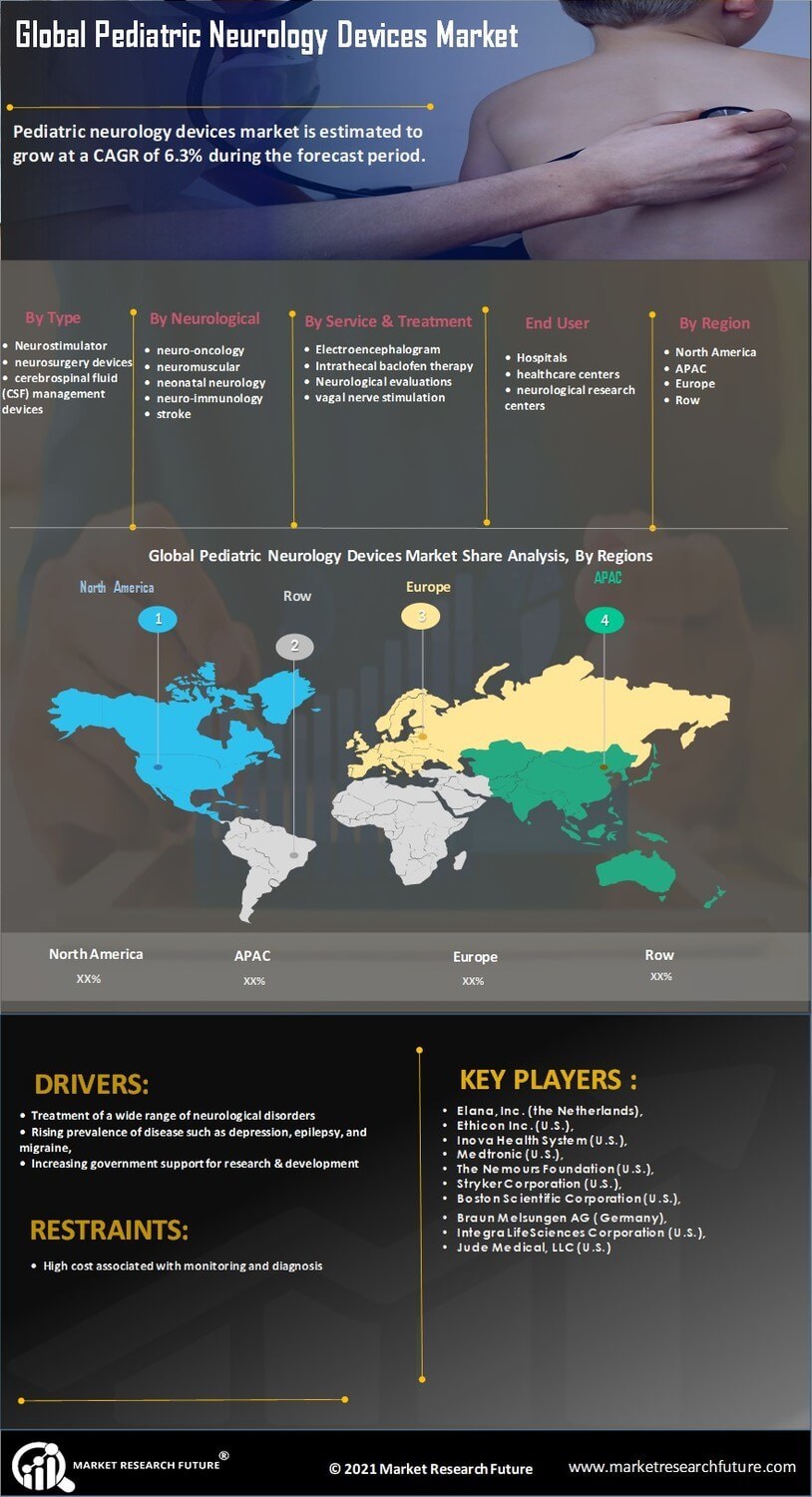Global Pediatric Neurology Devices Market Summary
The Global Pediatric Neurology Devices Market is projected to grow from 2.03 USD Billion in 2024 to 4.01 USD Billion by 2035.
Key Market Trends & Highlights
Pediatric Neurology Devices Key Trends and Highlights
- The market is expected to experience a compound annual growth rate (CAGR) of 6.38 percent from 2025 to 2035.
- By 2035, the market valuation is anticipated to reach 4.01 USD Billion, indicating robust growth potential.
- In 2024, the market is valued at 2.03 USD Billion, laying a strong foundation for future expansion.
- Growing adoption of advanced pediatric neurology devices due to increasing prevalence of neurological disorders is a major market driver.
Market Size & Forecast
| 2024 Market Size | 2.03 (USD Billion) |
| 2035 Market Size | 4.01 (USD Billion) |
| CAGR (2025-2035) | 6.38% |
Major Players
Elana, Inc. (the Netherlands), Ethicon Inc. (U.S.), Inova Health System (U.S.), Medtronic (U.S.), The Nemours Foundation (U.S.), Stryker Corporation (U.S.), Boston Scientific Corporation (U.S.), B.Braun Melsungen AG (Germany), Integra LifeSciences Corporation (U.S.), St. Jude Medical, LLC (U.S.)












Leave a Comment